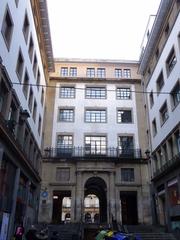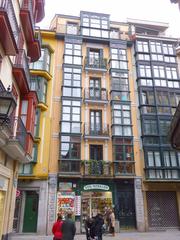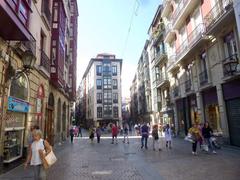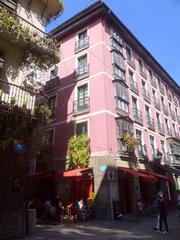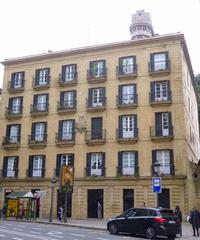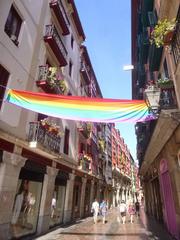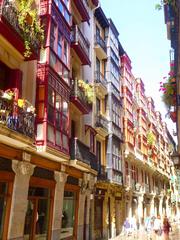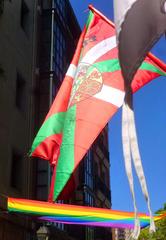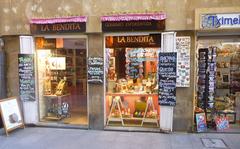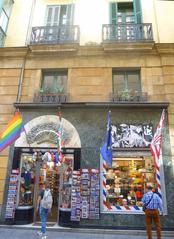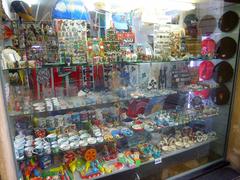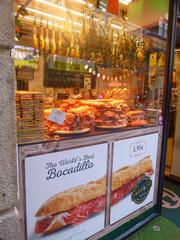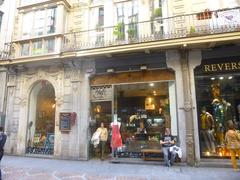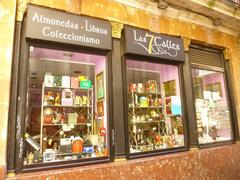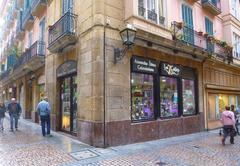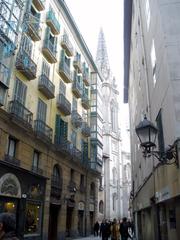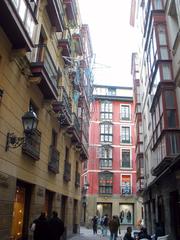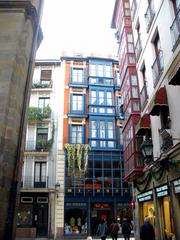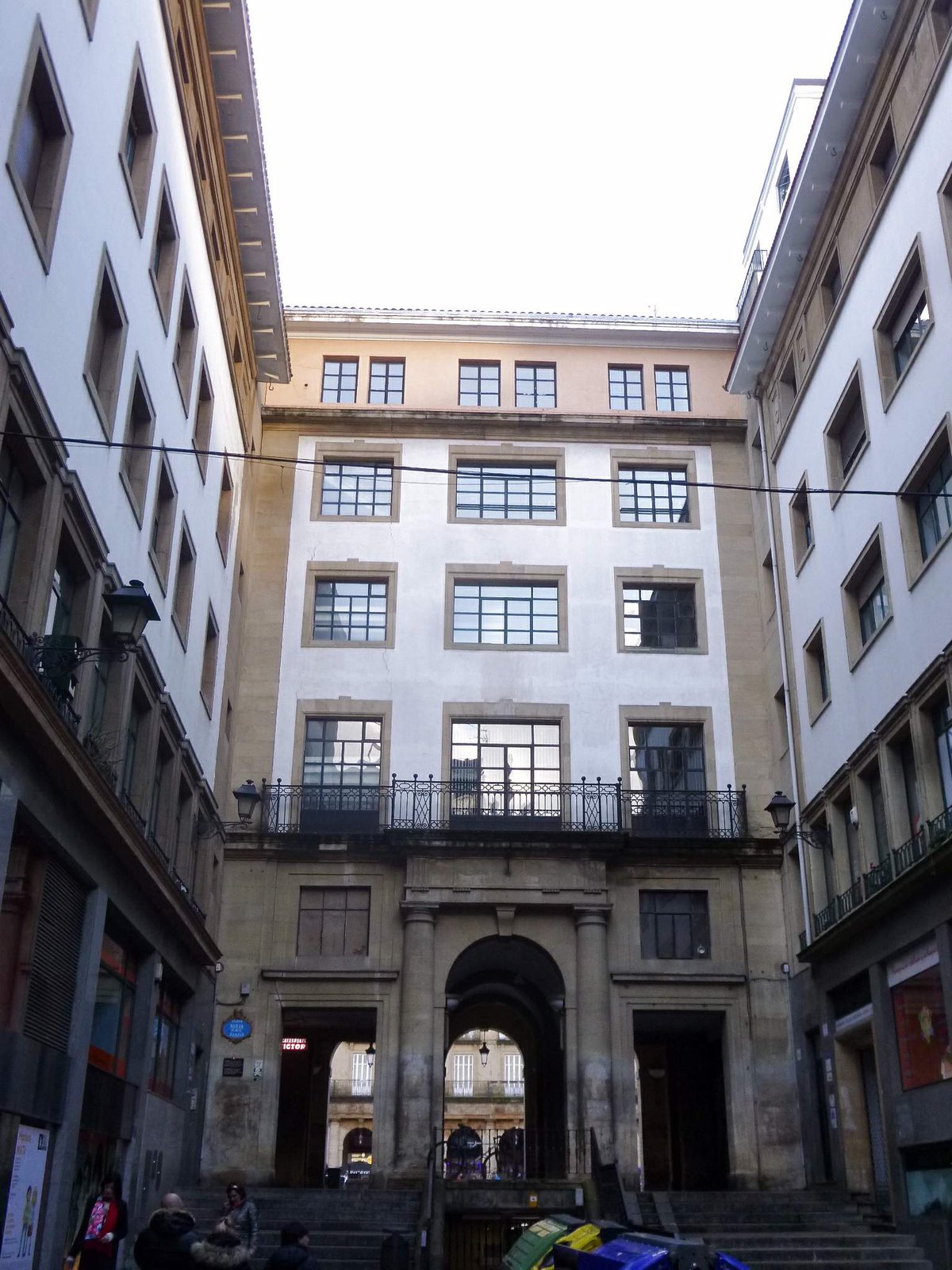
Casco Viejo Bilbao: Visiting Hours, Tickets, Historical Sites & Gastronomic Guide
Date: 14/06/2025
Introduction: Discovering the Heart of Bilbao
Casco Viejo, Bilbao’s medieval Old Quarter—also known as “Siete Calles” (Seven Streets)—stands as the city’s vibrant core, where centuries-old architecture, dynamic Basque culture, and world-renowned gastronomy converge. From its origins as a fishing village in the 13th century, Casco Viejo has evolved into a labyrinth of narrow lanes, Gothic and Baroque monuments, lively plazas, and bustling markets that invite exploration at every turn.
This detailed guide provides everything you need to plan your visit: historical insights, practical visiting hours and ticketing info, accessibility tips, and a curated overview of the district’s must-see sites and culinary highlights. Easily reached by Metro Bilbao and designed for pedestrians, Casco Viejo welcomes travelers to immerse themselves in its unique blend of history, culture, and Basque hospitality (Barceló Guide, Lonely Planet, Bilbao Turismo).
Table of Contents
- Origins & Historical Development
- Architectural and Urban Heritage
- Must-See Historical Sites
- Gastronomy & Pintxos Culture
- Practical Visitor Information
- Accessibility & Transport
- Local Events, Traditions & Etiquette
- Frequently Asked Questions
- Visual & Interactive Resources
- Conclusion
- Sources
Origins & Historical Development
Casco Viejo is the birthplace of Bilbao and reflects its transformation from a fortified riverside settlement into a thriving urban center. The district’s name, “Bilbao,” is believed to derive from the Basque words bi (two) and albo (sides), referencing original settlements on both banks of the Nervión River (Barceló Guide).
Initially composed of three parallel streets—Somera, Artecalle, and Tendería—Casco Viejo expanded in the 15th century to include four additional streets, now collectively called “Las Siete Calles.” Remnants of ancient walls and traditional trades remain evident in the street names and layout. The area’s growth was fueled by its strategic position on the Nervión-Ibaizabal estuary, enabling maritime commerce and cultural exchange throughout the Middle Ages.
Architectural and Urban Heritage
Casco Viejo is a living showcase of Gothic, Renaissance, Baroque, and Art Deco styles, unified by pedestrian-friendly lanes, lively squares, and historic facades.
The Seven Streets (Siete Calles)
These original arteries—Somera, Artecalle, Tendería, Belostikale, Carnicería Vieja, Barrenkale, and Barrenkale Barrena—are the heart of the Old Town. Once lined with guild houses and shops, they are now home to boutique stores, artisan bakeries, and atmospheric pintxos bars (Authentic Basque Country).
Religious Monuments
-
Santiago Cathedral: A 14th-century Gothic cathedral and pilgrimage stop on the Camino de Santiago.
- Hours: Daily 9:30–13:30, 16:30–19:30
- Tickets: Approx. €3 for tourists; free for worshippers
- Accessibility: Limited wheelchair access (Official Tourism Site)
-
Church of San Antón: Riverside Gothic church, iconic on Bilbao’s city crest.
- Hours: Daily 10:00–18:00
- Tickets: Free
-
Church of San Nicolás: Baroque gem from 1756, significant in regional history.
- Hours: Open during mass/events
- Tickets: Free
Civic and Cultural Landmarks
-
Plaza Nueva: Arcaded neoclassical square, epicenter for pintxos and cultural events.
- Open: Year-round; Sunday flea market 9:00–15:00
- Tickets: Free (Bilbao Turismo)
-
Teatro Arriaga: Neo-Baroque theater inspired by the Paris Opera House.
- Box Office: Tue–Sat 11:00–14:00, 17:00–20:00
- Tickets: Vary by event (Teatro Arriaga)
-
Mercado de la Ribera: Europe’s largest covered market, Art Deco style.
- Hours: Tue–Sun 8:00–15:00; closed Mon
- Tickets: Free (Mercado de la Ribera)
-
San Antón Bridge: Adjacent to the church, part of Bilbao’s coat of arms, offers scenic river views.
Must-See Historical Sites & Hidden Gems
- Plaza de Unamuno: Lively square named after philosopher Miguel de Unamuno; starting point for the Calzadas de Mallona stairs to the Basilica of Begoña.
- Santos Juanes Church: 17th-century Baroque church hosting concerts and community events.
- Compass Rose Stone: Discreet marker at the junction of Andra Maria Kalea, Txakur Kalea, and Pilota Kalea; the only vantage to see the Basilica of Begoña (Authentic Basque Country).
- Bandstand in Areatza Park (Kiosko del Arenal): Art Deco bandstand hosting concerts during festivals.
Gastronomy & Pintxos Culture
Pintxos: The Soul of Basque Culinary Life
Casco Viejo is synonymous with pintxos—small, elaborate snacks served atop bread, enjoyed with local wines or cider. The best way to experience Basque food culture is by “pintxos hopping,” savoring a couple at each bar, especially in and around Plaza Nueva (Touropia; Adventure Backpack).
Signature Pintxos & Dishes:
- Foie gras with apple compote at Gure Toki (Tourist Secrets)
- Crab gratin at El Globo
- Squid ink risotto at Baster
- Bacalao a la vizcaína (salt cod in red pepper sauce) at Restaurante Victor (Discover Donosti)
- Txuleta (bone-in ribeye), especially in cider houses (Adventure Backpack)
Vegetarian options and modern twists can be found at venues like Kasko (Discover Donosti).
Markets & Local Products
- Mercado de la Ribera: Over 60 stalls of fresh produce, meats, and seafood; houses the La Ribera Restaurant, specializing in market-sourced dishes (Discover Donosti).
Sweet Treats
- Pastel de arroz: Custard tart
- Pantxineta: Pastry with custard and almonds
- Carolina: Meringue tartlet
Local Drinks
- Txakoli: Sparkling, dry white wine
- Basque cider (sidra)
- Affordable local wines (Sidewalk Safari)
Food Festivals
- Fiesta de Santo Tomás (December): Street market with talos con chorizo and cider (Sidewalk Safari)
- Weekly markets in Plaza Nueva
Practical Visitor Information
Visiting Hours & Entry
- Casco Viejo: Open 24/7; best explored on foot
- Churches/Museums: Vary by site; generally 9:00–13:30 and 16:00–19:30
- Plaza Nueva & Markets: Open daily; market busiest in mornings
Tickets
- Most churches and public spaces: Free entry
- Museums and special exhibitions: Small fee, discounts with Bilbao Card
Guided Tours
- Walking, historical, and gastronomic tours available; book in advance for best availability (Bilbao Turismo)
Money
- Widespread card acceptance, but carry some cash for small purchases
- ATMs throughout Casco Viejo
Accessibility & Transport
- On Foot: Pedestrianized, cobbled streets (wear comfortable shoes)
- Metro: Casco Viejo station (Lines 1 & 2), centrally located
- Tram/Bus: Stops near Arenal Gardens and riverfront
- Elevators: Public lifts connect Casco Viejo with uphill neighborhoods
- Cycling: Best on riverfront; limited within Old Town (Leisure Cycle Tours)
Note: Some streets are narrow and uneven—those with mobility concerns should plan accordingly.
Local Events, Traditions & Etiquette
- Aste Nagusia (August): Largest festival, with parades and concerts
- Txikiteo: Traditional bar crawl with wine and choral singing
- Language: Spanish and Basque; most signage is bilingual, English spoken in many tourist venues
- Tipping: Not obligatory, but appreciated
Frequently Asked Questions (FAQ)
Q: What are Casco Viejo’s opening hours?
A: The district is open 24/7; individual attractions have set hours, typically 9:00–19:30.
Q: Are tickets required for historical sites?
A: Most are free; museums and tours may charge a small fee.
Q: Are guided tours available?
A: Yes, including walking and gastronomic tours—book ahead.
Q: Is Casco Viejo accessible for wheelchairs?
A: Many areas are accessible, but some cobblestone lanes may be challenging. Public lifts and step-free access are available at key sites.
Q: When is the best time to visit?
A: Late spring and early autumn offer mild weather and vibrant cultural events.
Visual & Interactive Resources
- Interactive maps and virtual tours: Bilbao Turismo
- Photo spots: Plaza Nueva at sunset, Mercado de la Ribera interior, riverside promenades
Conclusion
Casco Viejo is the soul of Bilbao—where history, architecture, and Basque culture mingle amid lively markets, ancient churches, and culinary delights. With pedestrian-friendly streets and a welcoming spirit, it’s the perfect place to discover the city’s origins, savor local flavors, and join in authentic Basque traditions. Use this guide for practical tips and inspiration to make the most of your visit.
Download the Audiala app for self-guided tours, interactive maps, and up-to-date tips. Follow us on social media for the latest on events and new posts about Bilbao’s rich heritage.
Sources and Further Reading
- Casco Viejo Bilbao: Visiting Hours, Tickets, and Guide to Bilbao’s Historic Old Town, 2024, Barceló Guide (Barceló Guide)
- Casco Viejo Visiting Hours, Tickets, and Bilbao Historical Sites: A Complete Guide to Exploring Bilbao’s Old Town, 2024, Official Bilbao Tourism Site (Bilbao Turismo)
- Casco Viejo: Visiting Hours, Historical Sites & Culinary Delights in Bilbao’s Old Town, 2024, Discover Donosti and Adventure Backpack (Discover Donosti)
- Authentic Basque Country: Best of Casco Viejo, 2024 (Authentic Basque Country)
- Lonely Planet: Casco Viejo Attractions, 2024 (Lonely Planet)
- Touropia: Things to Do in Bilbao (Touropia)
- Adventure Backpack: Bilbao Itinerary (Adventure Backpack)
- Tourist Secrets: Hidden Culinary Gems of Bilbao (Tourist Secrets)
- Sidewalk Safari: Places to Eat in Bilbao (Sidewalk Safari)
